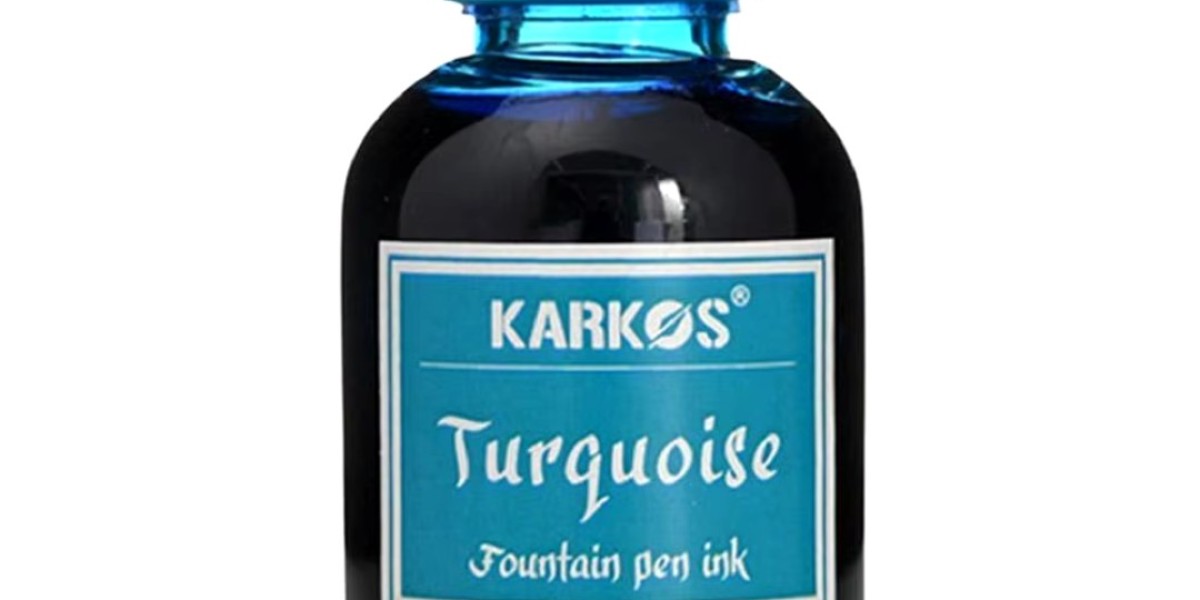Fountain pen ink is one of the most essential components of the fountain pen writing experience. Whether you're an enthusiast or simply someone who enjoys writing with a fountain pen, understanding the different types of ink available and their various uses can significantly enhance your writing experience. There’s a wide array of fountain pen inks, each tailored to specific needs, preferences, and writing styles. These inks vary in terms of color, composition, and performance, and understanding the subtleties of each type can help you choose the right ink for your needs. In this article, we will delve into the different types of fountain pen ink and explore their uses in detail, without focusing on their advantages, disadvantages, key features, or benefits.
1. Pigment-Based Inks
Pigment-based inks are known for their durability and resistance to fading. Unlike dye-based inks, which dissolve in the solution, pigment inks contain solid particles of color that float within the ink. This makes pigment inks more water-resistant, which is why they’re often preferred for archival and important documents. Pigment ink is also commonly used in calligraphy and artwork because it provides deep, rich, and vibrant colors. In contrast to dye-based inks, which can sometimes bleed or feather on porous paper, pigment-based inks tend to provide sharper lines and more consistent writing.
One of the most notable characteristics of pigment inks is their permanence. These inks are often used for important legal or official documents, as they do not fade easily when exposed to sunlight or moisture. Moreover, they work well in fountain pens with fine or medium nibs, though some pigment inks may cause clogging if used in very fine nibs, so care should be taken when choosing a pen to pair with this type of ink.
2. Dye-Based Inks
Dye-based inks are the most common type of fountain pen ink. These inks are composed of water-soluble dyes that are dissolved into the liquid base, creating a wide range of colors and shades. The fluidity of dye-based inks ensures smooth writing, and they tend to dry quickly, making them ideal for fast writers. Since they are water-based, they’re less prone to clogging in fountain pens and are typically easy to clean out.
Dye-based inks can be vibrant and eye-catching, offering an extensive color palette that includes everything from basic black and blue to a variety of pastel and neon shades. They are commonly used in everyday writing and are often a go-to choice for students, professionals, and anyone looking for an easy-to-use fountain pen ink. However, they are generally not as water-resistant or fade-resistant as pigment inks, and their colors may not be as permanent over time.
3. Iron Gall Inks
Iron gall ink is one of the oldest types of ink, with roots dating back to the 5th century. It is created by combining tannin (from plant sources like oak galls) with iron salts. The result is a dark, sometimes almost black ink that has a unique and historical appeal. Iron gall ink is often favored for its rich, antique appearance, and it was commonly used by famous historical figures like Leonardo da Vinci and Thomas Jefferson.
One of the key traits of iron gall ink is its deep, bluish-black hue. Over time, the ink may darken further, which gives it an aged look that appeals to collectors and those writing historical documents. However, it is important to note that iron gall ink can be somewhat acidic and may corrode fountain pen nibs if not used with care. Additionally, the ink can be prone to fading and may cause paper deterioration if left untreated. As such, iron gall ink requires special handling and regular cleaning of fountain pens to avoid damage.
4. Solvent-Based Inks
Solvent-based inks, as the name suggests, contain solvents that help dissolve the colorants used in the ink. These inks tend to dry faster than dye-based or pigment-based inks, and they often feature a high degree of waterproofness. Due to the chemical nature of their composition, solvent-based inks are typically more resistant to water and moisture, making them a popular choice for artists or writers who want their ink to stand up to various environmental factors.
One of the unique aspects of solvent-based inks is their ability to produce very sharp lines and vivid colors. They’re often used for technical writing or artwork that requires precision and clarity. Because of the chemicals involved in creating solvent-based inks, they may not be as widely available or as commonly used as other types of inks, but they remain a choice for specialized tasks where durability and color clarity are paramount.
5. Shimmer Inks
Shimmer inks are a relatively new innovation in the fountain pen world. These inks contain particles that shimmer or sparkle when the ink is applied to paper. The shimmer is often created using mica or other metallic elements that reflect light, giving the ink a unique, glittery effect. Shimmer inks are typically used for decorative writing, invitations, or artwork where the goal is to create a visually stunning, attention-grabbing appearance.
The primary appeal of shimmer inks lies in their aesthetic value. Whether you’re writing a greeting card or creating a custom design, the shimmer effect adds an extra layer of elegance and creativity. However, shimmer inks do require careful handling, as the metallic particles can clog fountain pens if not cleaned regularly. Additionally, the shimmer effect may be more noticeable on certain types of paper, so it’s worth experimenting to find the best surface for showcasing the shimmer.
6. Color-Change Inks
Color-change inks, also known as mood inks, are a fascinating innovation that adds an element of surprise to fountain pen writing. These inks have a chemical composition that allows them to change color depending on environmental factors such as temperature or light exposure. For example, some color-change inks may appear blue at room temperature and shift to green or purple when exposed to heat.
These inks are often used for creative purposes or by those who enjoy experimenting with their writing tools. They are particularly popular among fountain pen collectors or those who enjoy unique, personalized writing experiences. However, color-change inks may not always provide the same consistency or permanence as more traditional inks, so they are typically used for fun, artistic, or experimental purposes.
7. Refillable Ink Cartridges
While not a type of ink in itself, ink cartridges are a common way of storing and using fountain pen ink. These small, pre-filled cartridges contain either dye-based, pigment-based, or other forms of ink, and they offer a convenient way to use fountain pens without the need for an ink bottle or refillable converter. Ink cartridges are commonly used in fountain pens that are designed for quick and easy use, such as those used for travel or casual writing.
While ink cartridges are not as versatile as ink bottles (as they often come in a limited number of colors), they provide a hassle-free experience for those who don’t want to deal with ink spills or the time-consuming process of filling their pens manually. They are generally a good option for beginners or anyone who wants a simple, no-fuss way to use fountain pen ink.
8. Scented Inks
Scented inks are a niche category of fountain pen inks that combine fragrance with ink. These inks can add a pleasant aroma to your writing, turning the act of writing into a multisensory experience. While they are not as common as other types of ink, scented inks are often used for special occasions, letters, or gifts.
The scent of these inks is usually subtle, and it may fade over time. Scented inks can be found in various fragrances, ranging from floral to fruity, and are typically used by those who want to add a personal touch to their written correspondence. However, scented inks should be used with caution, as the scent may interact with certain types of paper or ink, causing changes in the appearance of the writing.
Conclusion
Understanding the various types of fountain pen ink can vastly enhance your experience, whether you're an artist, a writer, or a collector. Each ink type offers distinct characteristics and can be selected based on your particular needs, from the smooth and vibrant flow of dye-based inks to the rich, historical charm of iron gall ink. When choosing the right fountain pen ink, it’s essential to consider factors like permanence, color, fluidity, and use case. This knowledge will help ensure that your fountain pen always delivers the ideal writing experience, making each written word a unique work of art.










